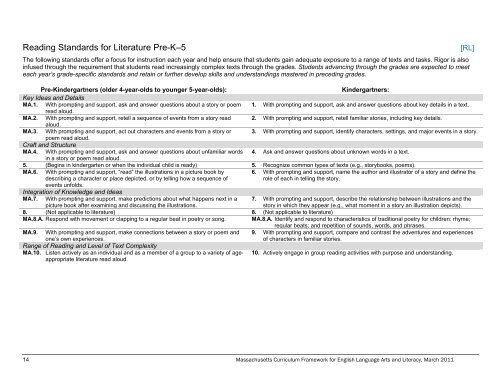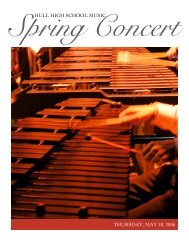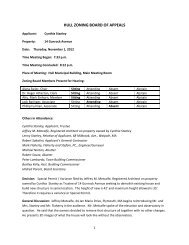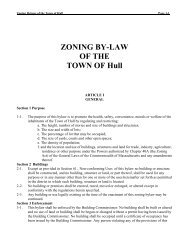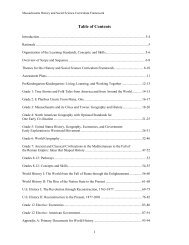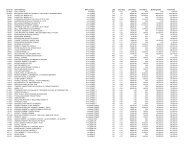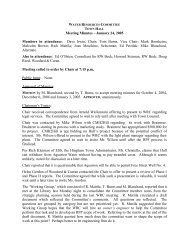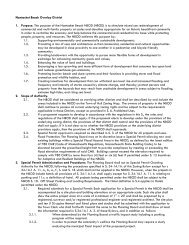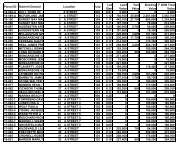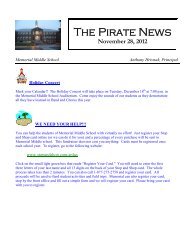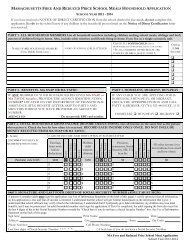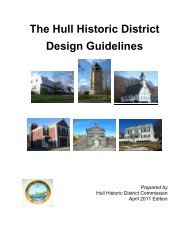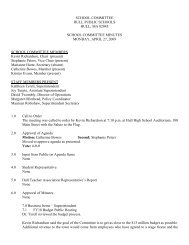Massachusetts Curriculum Framework for English Language Arts ...
Massachusetts Curriculum Framework for English Language Arts ...
Massachusetts Curriculum Framework for English Language Arts ...
- No tags were found...
Create successful ePaper yourself
Turn your PDF publications into a flip-book with our unique Google optimized e-Paper software.
Reading Standards <strong>for</strong> Literature Pre-K–5 [RL]<br />
The following standards offer a focus <strong>for</strong> instruction each year and help ensure that students gain adequate exposure to a range of texts and tasks. Rigor is also<br />
infused through the requirement that students read increasingly complex texts through the grades. Students advancing through the grades are expected to meet<br />
each year’s grade-specific standards and retain or further develop skills and understandings mastered in preceding grades.<br />
Pre-Kindergartners (older 4-year-olds to younger 5-year-olds):<br />
Kindergartners:<br />
Key Ideas and Details<br />
MA.1. With prompting and support, ask and answer questions about a story or poem 1. With prompting and support, ask and answer questions about key details in a text.<br />
read aloud.<br />
MA.2. With prompting and support, retell a sequence of events from a story read 2. With prompting and support, retell familiar stories, including key details.<br />
aloud.<br />
MA.3. With prompting and support, act out characters and events from a story or 3. With prompting and support, identify characters, settings, and major events in a story.<br />
poem read aloud.<br />
Craft and Structure<br />
MA.4. With prompting and support, ask and answer questions about unfamiliar words 4. Ask and answer questions about unknown words in a text.<br />
in a story or poem read aloud.<br />
5. (Begins in kindergarten or when the individual child is ready) 5. Recognize common types of texts (e.g., storybooks, poems).<br />
MA.6. With prompting and support, “read” the illustrations in a picture book by<br />
describing a character or place depicted, or by telling how a sequence of<br />
6. With prompting and support, name the author and illustrator of a story and define the<br />
role of each in telling the story.<br />
events unfolds.<br />
Integration of Knowledge and Ideas<br />
MA.7. With prompting and support, make predictions about what happens next in a<br />
picture book after examining and discussing the illustrations.<br />
7. With prompting and support, describe the relationship between illustrations and the<br />
story in which they appear (e.g., what moment in a story an illustration depicts).<br />
8. (Not applicable to literature) 8. (Not applicable to literature)<br />
MA.8.A. Respond with movement or clapping to a regular beat in poetry or song. MA.8.A. Identify and respond to characteristics of traditional poetry <strong>for</strong> children: rhyme;<br />
regular beats; and repetition of sounds, words, and phrases.<br />
MA.9. With prompting and support, make connections between a story or poem and<br />
one’s own experiences.<br />
9. With prompting and support, compare and contrast the adventures and experiences<br />
of characters in familiar stories.<br />
Range of Reading and Level of Text Complexity<br />
MA.10. Listen actively as an individual and as a member of a group to a variety of ageappropriate<br />
10. Actively engage in group reading activities with purpose and understanding.<br />
literature read<br />
aloud.<br />
14 <strong>Massachusetts</strong> <strong>Curriculum</strong> <strong>Framework</strong> <strong>for</strong> <strong>English</strong> <strong>Language</strong> <strong>Arts</strong> and Literacy, March 2011


